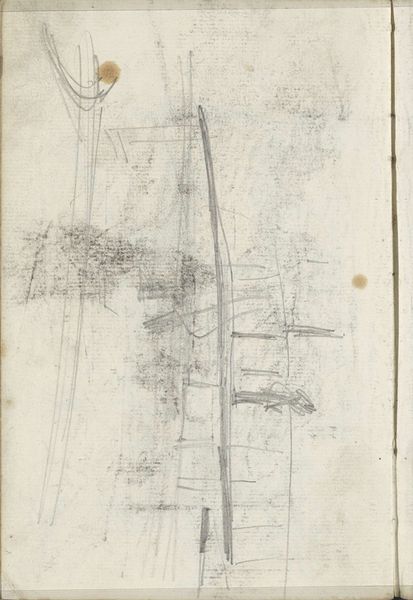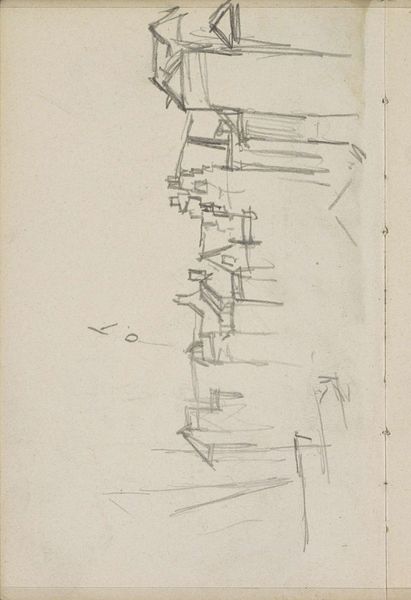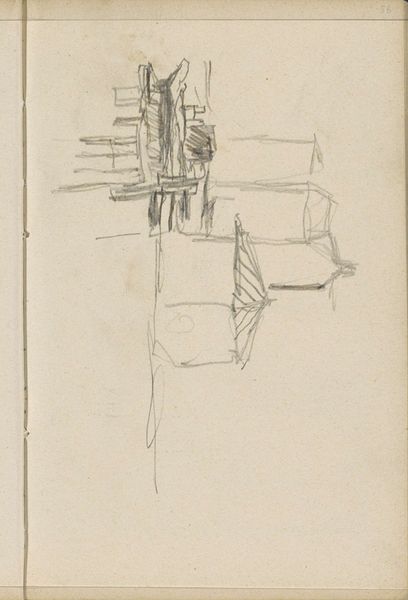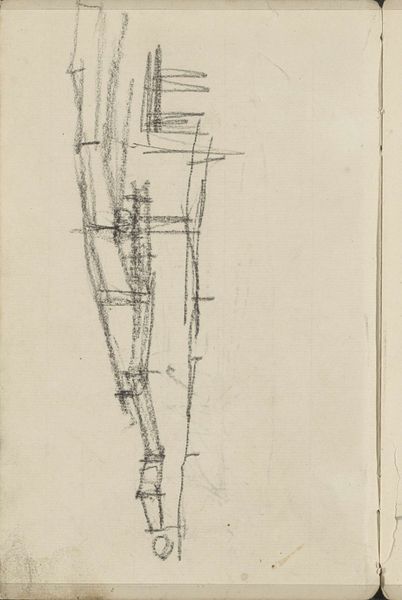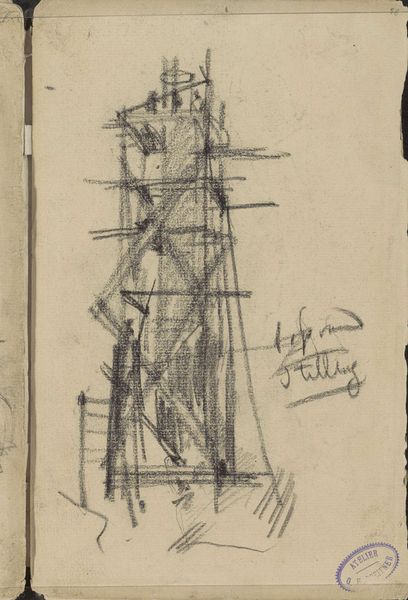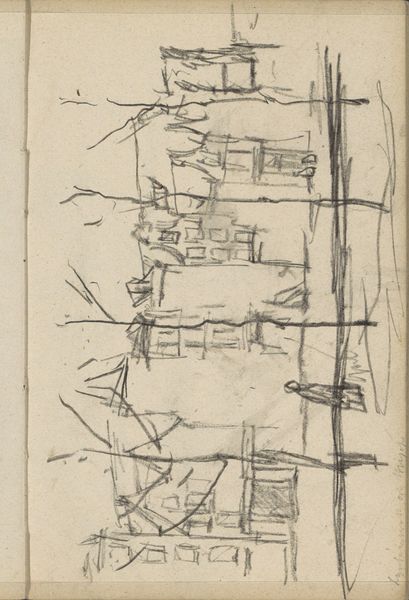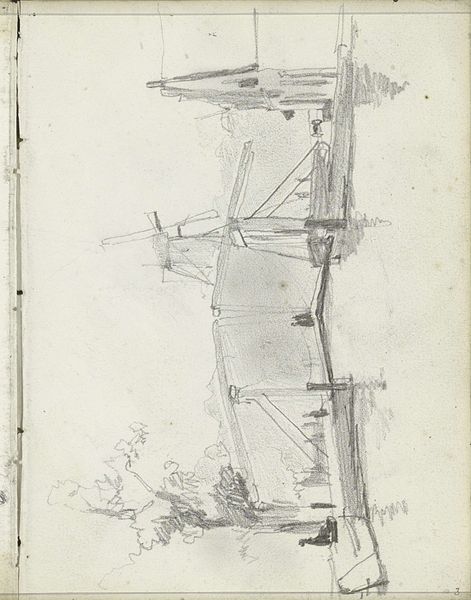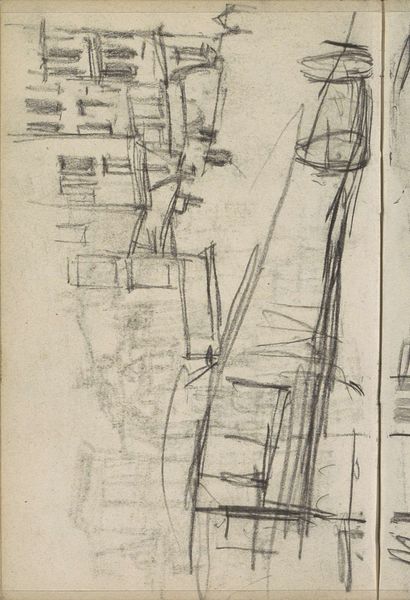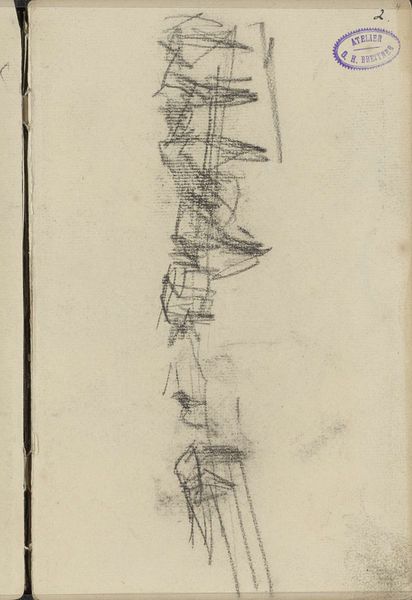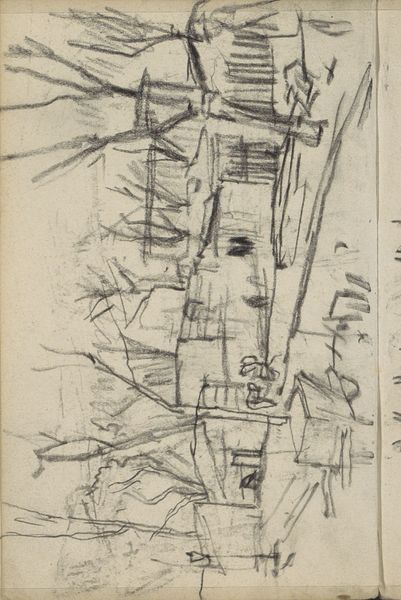
Copyright: Rijks Museum: Open Domain
Editor: This is "Gezicht te Amsterdam" or "View of Amsterdam," a graphite and pen-ink sketch on paper, created around 1909 by George Hendrik Breitner. It has an immediacy to it; almost like a snapshot of a fleeting moment in the city. What story does this sketch tell you? Curator: The rapid lines definitely give it a sense of immediacy. Breitner was known for documenting Amsterdam, not just its beauty, but also its burgeoning urbanisation and working-class life. This sketch, likely made in situ, captures that sense of change, right? The way the buildings are stacked feels almost precarious. Editor: Precarious is a good word. I almost feel the buildings are encroaching on each other. Curator: Exactly! It’s interesting to think about Amsterdam at the turn of the century. A time of great social change with industrialization. I think Breitner hints at these socio-economic shifts. The cramped composition mirroring the realities of the quickly expanding city and the people inhabiting it. Consider who had access to housing, who was being displaced. What do you think about the absent people? Editor: That’s a powerful point – the lack of figures could be a comment on the anonymity and displacement urbanization can cause. Breitner doesn’t romanticize the city, does he? Curator: Not at all. And that's where his radical nature shines through, aligning him with social realist movements of the time. He presents Amsterdam as it *is*, not as people wished it to be. A viewpoint from the margins that demands a critical understanding. Editor: I see the city – its architecture, and social tensions of a changing time – sketched through this lens. Thanks for helping unpack this for me. Curator: My pleasure. These seemingly simple sketches are anything but – they are documents that call us to analyze a particular space and moment of history. They invite questions and make us think.
Comments
No comments
Be the first to comment and join the conversation on the ultimate creative platform.
